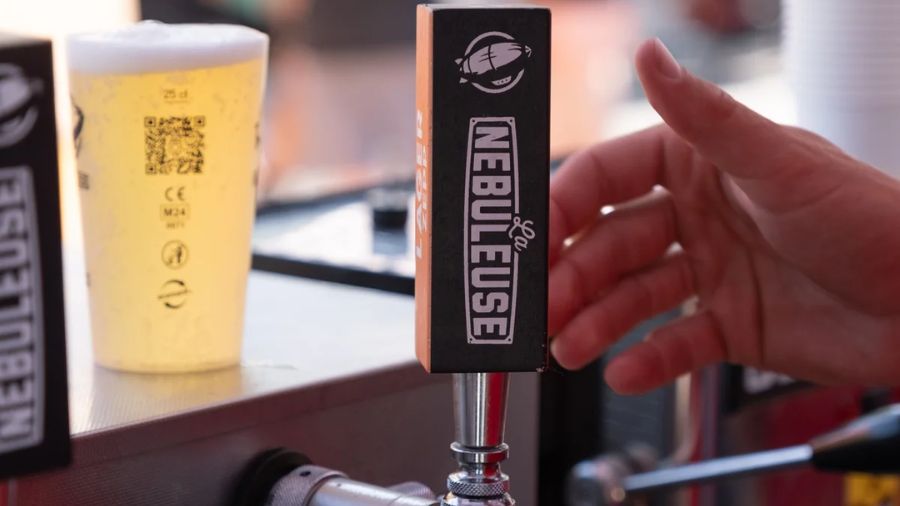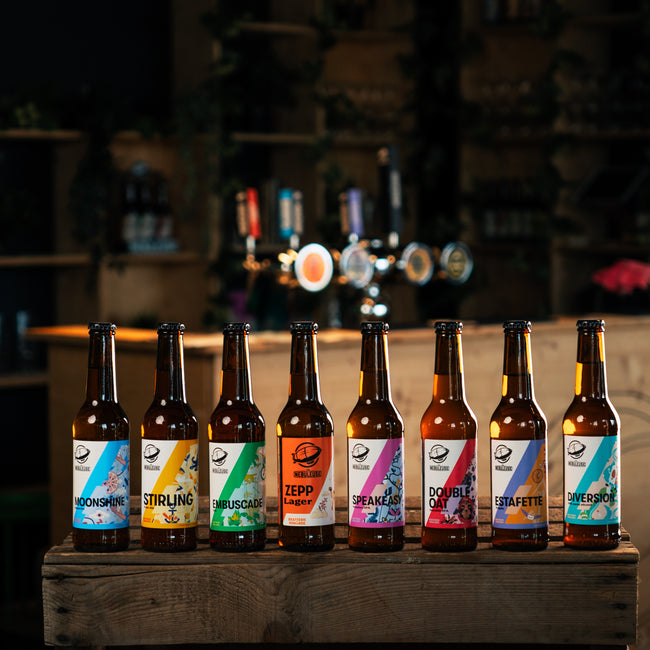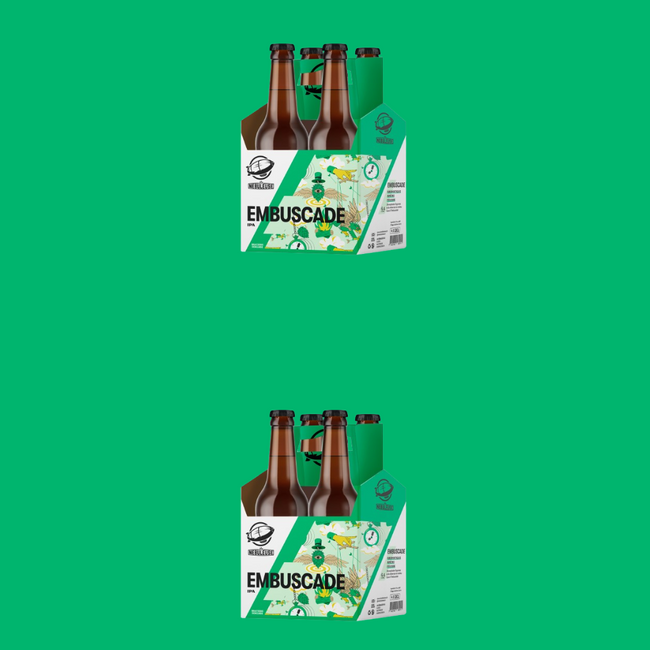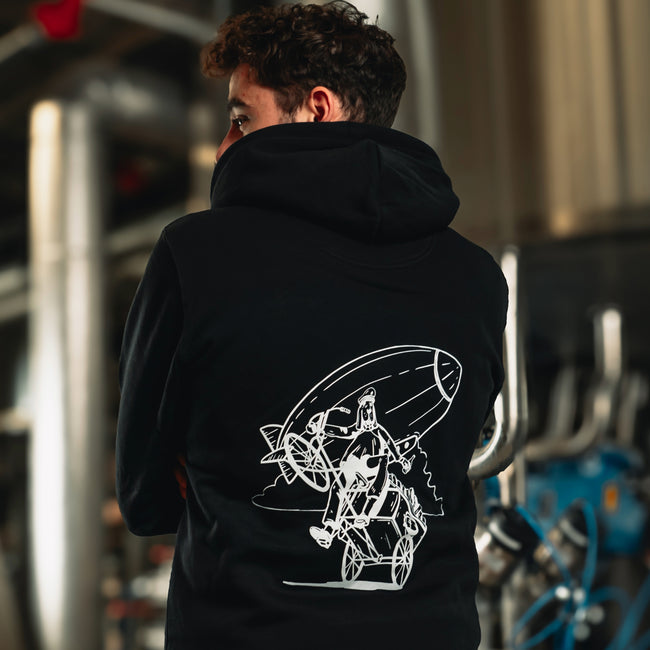Swiss craft beer in the brewing landscape

The foam revolution that is reshaping Switzerland
Imagine a country with 32 breweries in 1990. Now, multiply that number by 40—no, that's not a miscalculation after an overly enthusiastic tasting. In 2021, the 1,278 breweries produced approximately 3.4 million hectoliters of beer , and this creative explosion is transforming our relationship with beer, one bubble at a time.
With over 1,200 beer producers, Switzerland boasts the highest number of breweries per capita, at 14 per 100,000 inhabitants—a world record that puts our small Alpine country ahead of the traditional hop-growing giants. We have been at the forefront of this transformation since 2014, witnessing but above all, actively participating in a movement that extends far beyond the confines of our stainless steel tanks. But being an actor in this movement involves a reality far removed from clichés, as shown by a typical day in a traditional Swiss brewery .
Because behind every new brewery, a whole ecosystem comes to life: from barley fields to tasting tables, from R&D laboratories to local festivals, the very philosophy of the craft movement It is redrawing the economic and cultural map of Switzerland. This revolution is not limited to statistics - it is transforming our traditions, our territories, our very way of conceiving conviviality.
From 32 to 1278 - The creative explosion that revolutionized the rules
The figures of a spectacular metamorphosis
The number of producers has exploded, jumping from 32 in 1990 to 1,278 in 2021—growth that would make any Silicon Valley startup green with envy. This meteoric rise can be attributed to a major historical event: the 1991 dissolution of the Beer Cartel , a convention that had strictly regulated the market since 1935. Each member brewery was allocated an exclusive distribution territory, prices were fixed, and only four types of beer were permitted: pale lager, specialty lager, dark lager, and strong lager. This sudden liberalization opened the floodgates of brewing creativity like never before, finally allowing brewers to explore beyond the imposed styles and conquer new territories.
The geographical distribution tells a fascinating story where each canton becomes a unique chapter. More than half of the beer-oriented tourist towns are located in the three cantons of Uri, Valais, and Graubünden, but the phenomenon affects the entire country with surprising force. The Swiss Brewers Association continues to welcome new members, as evidenced by the recent additions of Landskroner Bräu AG in Grellingen, La Nébuleuse SA in Renens, and Brauerei Hardwald AG in Wallisellen in May 2025 – proof that this creative momentum shows no signs of slowing down.
To put these figures into perspective, Switzerland, with its 14 breweries per 100,000 inhabitants, even surpasses Germany, which has only 1.8 per 100,000 inhabitants despite its legendary brewing reputation. We have literally transformed our small territory into a veritable laboratory of brewing innovation, proving that a country's size has nothing to do with the intensity of its creativity and helping us understand the differences between craft and industrial beers . It is in this vibrant context that the rise of craft beers in French-speaking Switzerland is redefining the industry, creating a new geography of taste.
From dusty bistro to temple of tasting
Consumption patterns are changing at breakneck speed, radically transforming how we enjoy beer. Beer tourism has developed alongside this exponential growth, metamorphosing traditional bistros into sophisticated beer bars where wine cellars now share space with cellars of beers guarded like liquid treasures.
Tasting is becoming an art form in its own right, almost a science. Vertical tastings compare vintages of the same beer with the precision of a seasoned oenologist, while food pairings now rival the most sophisticated wine pairings. Our Moonshine , this Belgian white beer that stubbornly defies clichés, perfectly embodies this new approach: equally at home in a trendy Zurich bar as on a sunny Valais terrace, it gleefully transcends traditional categories.
The cultural buzz surrounding beer is reaching unprecedented heights. There are now more than 50 beer hikes and 60 beer festivals organized each year in Switzerland, transforming our valleys into tasting trails where each stop reveals a new facet of craft beer. From small local markets to mega-urban events, every weekend becomes an opportunity for discovery where beer and gastronomy reveal their mutual secrets , creating a flavor alchemy that redefines our culinary traditions.
The domino effect on the local economic ecosystem
The economic impact goes far beyond mere production figures, creating a positive shockwave throughout the local economic fabric. Many of these new brewers have set up small family businesses, are passionate amateurs who transform their garage into a micro-laboratory, or adopt even more agile models, thus fueling the new trend of pop-up breweries in Switzerland - each brewery thus becoming an economic catalyst that brings new opportunities to its territory.
Beer tourism is experiencing explosive growth, surprising even the most optimistic. Craft breweries are partnering with local businesses to create themed hikes where visitors explore our stunning landscapes while discovering the art of brewing. Since 2015, no fewer than 178 beer festivals and over 200 hikes have sprung up across various regions, transforming Switzerland into a must-visit destination for discerning beer lovers from around the world.
But it is perhaps in agriculture that the revolution is most tangible. Swiss hops are becoming an aromatic treasure envied by international brewers, with local varieties developing unique profiles, true fingerprints of our Alpine terroirs. This agricultural renaissance creates a virtuous circle where The best opportunities to enjoy a craft beer are naturally multiplying, weaving a new social bond around craft culture.
Collaborative DNA - When competition becomes synergy
Shared brewing, laboratories of collective innovation
In the Swiss brewing world, something magical happens: competition gives way to collaboration , transforming potential rivals into creative allies. It's great fun to brew a small batch of beer, experiment with flavors, and see if the result matches the initial intention – a philosophy of sharing that transforms our industry into a true open-air collaborative laboratory.
Collaborative brewing among craft brewers is becoming the new norm, not the exception. Brewers in Geneva are merging their expertise with their counterparts in Graubünden, creating beers impossible to brew alone—creations that tell the story of two terroirs, two visions, united in a single glass. Knowledge circulates like open-source code in Silicon Valley, but with more foam and infinitely more conviviality.
We ourselves pushed this philosophy to its extreme during our Wortspiele event, a crazy experience where 20 brewers created 35 different beers from a single wort. .
Environmental challenges and disruptive solutions
Faced with climate challenges, our breweries are transforming into veritable laboratories of the circular economy, proving that ecology and culinary excellence are a perfect match. Spent grains—those malted residues once shamelessly discarded—now feed local livestock , are transformed into energy bars for athletes, or even become the substrate for gourmet mushrooms. This creative recycling would make even the most innovative cleantech startups green with envy.
Carbon capture during fermentation, long considered brewing science fiction, is becoming our everyday reality. Ingenious systems recover the carbon dioxide naturally produced by our hardworking yeasts and reintroduce it during carbonation – zero emissions, zero guilt, 100% natural bubbles. Our Zepp , with its production process optimized down to the smallest detail, embodies this new generation where environmental performance and taste excellence go hand in hand.
Certainly, the challenges remain immense, but rather than giving up, the industry is rolling up its sleeves and innovating like never before. NASA-worthy water recovery systems, revolutionary biodegradable packaging, short supply chains optimized by artificial intelligence… Sustainability is being built one sip at a time , transforming each challenge into a creative opportunity.
The future is written in bubbles - Biotech, AI and beyond
Technological innovation is transforming our practices at a speed that would make a laboratory centrifuge spin. The application of machine learning via Big Data can be used in various applications within the beer industry—a phrase that would have been laughable ten years ago, but which is now part of the industry's vocabulary. It is now possible to predict the percentage of beer fermented in each batch and the precise moment to move to the next stage of production. AI is making its way into the optimization of recipes and processes, and yet... the artisanal spirit remains intact, more alive than ever.
Immersive experiences are revolutionizing the way we share our passion. Augmented reality that reveals the story of each hop with a simple scan, virtual tours of our cellars from your sofa, NFTs of ultra-limited batches for 3.0 collectors – the future is being built in our tanks, a fascinating blend where the age-old tradition of brewing meets cutting-edge technology without ever compromising itself.
Switzerland, the new beacon of global craftsmanship
In mountain regions, tourism is a major economic driver, and craft beer is gradually becoming a new first-class carriage. Our small Alpine country, once known for its watches and chocolate, has transformed into a laboratory of brewing innovation where every valley now hides its hoppy gem. La Nébuleuse is riding this golden wave from our tanks in Renens, actively participating in this collective adventure that is redefining Swiss identity one beer at a time.
Of course, it's not all sunshine and roses (or gold, to stay on theme). Three years after the 2021 peak, the country has 86 fewer breweries —a slight decline that reminds us that even the best fermentations sometimes falter. Current economic challenges are testing our resilience like a high-temperature fermentation tests our yeast. But here's the Swiss miracle: the passion remains intact, even bubbling over, and consumers support their local breweries with a loyalty that warms the heart more surely than a winter stout.
The future? It's already bubbling in our fermenters like an effervescent promise. New hop varieties adapted to our changing Alpine climate, symbiotic partnerships with organic farmers who understand that the land and beer share the same soul, bold experiments that would raise an admiring eyebrow even for Louis Pasteur himself. This revolution goes far beyond our glasses—it's a whole facet of Swiss culture that's fermenting, bubbling, and reinventing itself.
So, ready to dive into this ever-evolving world? Every Swiss brewery now tells its own story, each creation becomes a liquid manifesto reflecting its terroir, its philosophy, its vision of craft beer. We've moved from a uniform market dictated by the cartel to a creative mosaic where innovation meets tradition, where the local engages with the global. Because ultimately, this entire frothy revolution has only one goal, simple and essential: to give meaning back to what we drink, to transform consumption into an experience, and to prove that another way of producing and enjoying beer is possible.
Cheers 🍻









